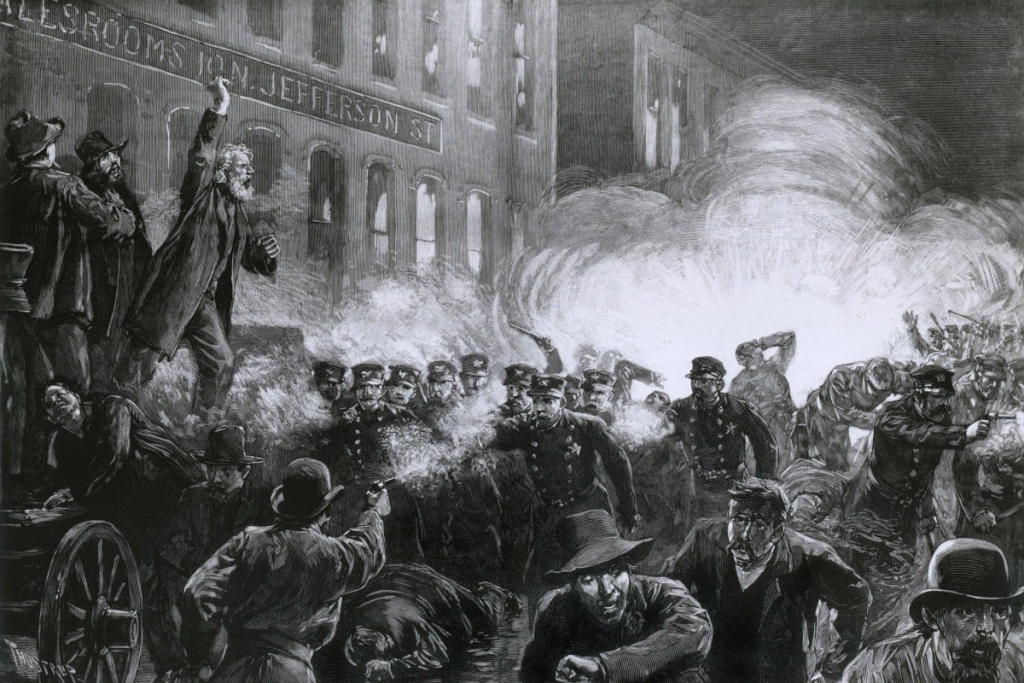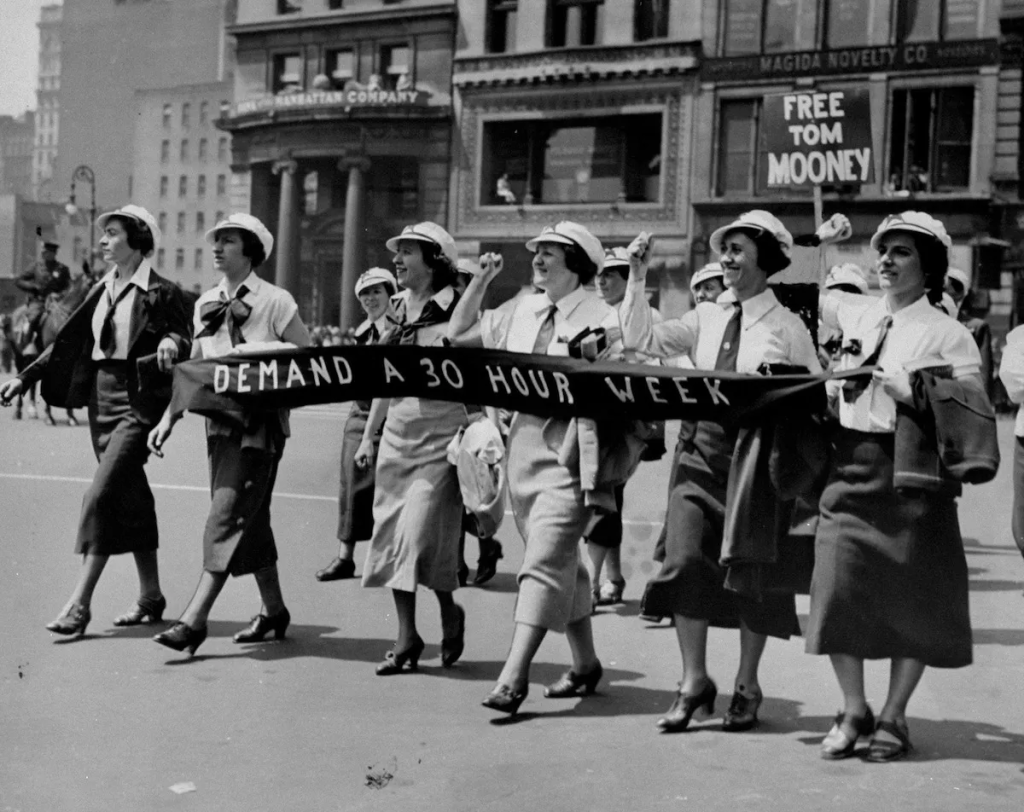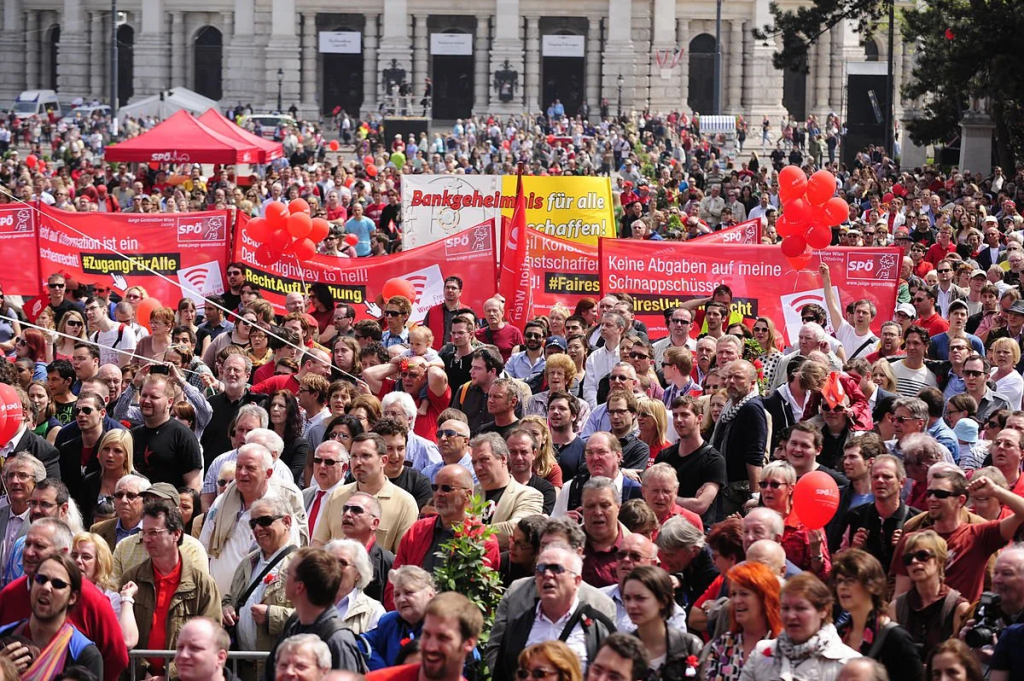Every May 1st, the world witnesses a unique phenomenon. Beyond the vibrant spring blooms and cheerful picnics unfolds a day steeped in history and ongoing social movements – International Workers’ Day. This day isn’t just about celebrating the work ethic; it’s a potent reminder of the struggles for workers’ rights and a platform for advocating for a fairer future. Let’s embark on a journey through time, exploring the fascinating history of International Workers’ Day, its evolution in the face of a changing world, and how it’s celebrated across the globe.
Seeds of Change: The Industrial Revolution and the Fight for Fairness

The story of International Workers’ Day doesn’t begin with grand pronouncements or political manifestos. It starts with the very real struggles of everyday people in the late 19th century. The Industrial Revolution was transforming economies around the world. Factories churned out goods at an unprecedented pace, but the human cost was high. Workers toiled long hours under harsh conditions, often with meager wages and little to no safety measures.
- A Call for Change Across the Atlantic: The simmering discontent of workers began to boil over, particularly in the United States. Inspired by earlier movements in Europe, American workers across various industries embarked on a campaign for an eight-hour workday. This culminated in a series of strikes and protests, with Chicago at the epicenter of the movement.
- The Haymarket Affair: A Catalyst for Change: Tragically, a peaceful protest in Chicago on May 4th, 1886, took a violent turn, becoming known as the Haymarket Affair. A bomb exploded during the event, leading to the deaths of several police officers and civilians. Eight workers were eventually convicted, with some facing execution, despite questions surrounding their direct involvement.
A Global Movement Takes Root: The Birth of International Workers’ Day

The Haymarket Affair, despite its tragic outcome, became a pivotal moment in the fight for workers’ rights. It highlighted the urgency of addressing worker grievances and the need for international solidarity. Just three years later, in 1889, the Second International, a socialist organization representing workers’ parties worldwide, declared May 1st as International Workers’ Day. This day was chosen to commemorate the ongoing struggles of workers and demand better working conditions globally.
From Marches to Maypoles: Celebrating International Workers’ Day Around the World
Today, International Workers’ Day transcends geographical boundaries, celebrated in diverse yet powerful ways:
- Rallies and Marches: In many countries, May 1st is a day for workers to raise their voices in unison. Large-scale rallies and marches take place, with workers from various sectors demanding better wages, safer working environments, and social justice reforms. These rallies often showcase a sea of red flags, a symbol of the labor movement.
- Labor Day Parades: While International Workers’ Day falls on May 1st, some countries celebrate Labor Day on a different date, often incorporating elements of May Day traditions. For instance, the United States and Canada celebrate Labor Day in September, featuring parades and festivities honoring the contributions of workers.
- A Continuation of Ancient Traditions: Interestingly, May Day celebrations in some parts of Europe retain a connection to ancient spring fertility rituals. Maypole dancing, bonfires, and traditional folk music performances are still significant aspects of the day, reflecting the holiday’s deep-rooted history that predates its association with workers’ rights.
Beyond the Slogans: The Enduring Significance of International Workers’ Day

International Workers’ Day is more than just a day for parades and speeches. It carries a deeper significance that continues to resonate across societies:
- A Symbol of Solidarity: May Day serves as a powerful symbol of worker solidarity. It unites people across borders and industries, reminding them of their shared struggles and the importance of fighting for fair treatment and improved working conditions.
- A Platform for Social Change: International Workers’ Day rallies often become a platform to address broader social and political issues like economic inequality, access to healthcare, and environmental justice. This allows workers to advocate for a more just and equitable world for everyone.
- A Day for Celebration: At its core, International Workers’ Day is a day to celebrate the contributions of working people to society. It’s a day to acknowledge the value of work and the vital role workers play in building economies, providing essential services, and driving progress.
The Evolving Landscape of Work: New Challenges and Emerging Demands

The world of work is constantly evolving, and the issues faced by workers in the 21st century are vastly different from those of the Industrial Revolution. Here’s how International Workers’ Day might adapt to address these challenges:
- The Rise of the Gig Economy: The traditional employer-employee model is changing, with the rise of the gig economy and freelance work. May Day celebrations could become a platform to advocate for fair pay, benefits, and social safety nets for these workers who often lack traditional protections.
- Automation and the Future of Jobs: As automation continues to reshape industries, International Workers’ Day might address the potential job losses and the need for reskilling initiatives to equip workers with new skills for the changing job market.
- A Global Conversation on Worker Rights: The globalized nature of work necessitates a global conversation about worker rights. International Workers’ Day could become a platform for international collaboration, fostering cooperation across borders to address challenges faced by workers worldwide, such as unfair labor practices in global supply chains.
The Takeaway: A Day for Reflection, Action, and Change

International Workers’ Day is not just a day to remember the past; it’s a call to action for the present and a vision for the future. It’s a day to reflect on the struggles and achievements of workers throughout history, to advocate for fairer working conditions in the face of new challenges, and to celebrate the immense contribution of workers to society. Whether you’re a factory worker, a teacher, a doctor, or an entrepreneur, International Workers’ Day is a reminder that we are all part of a global workforce that keeps the world running. So, on May 1st, take a moment to reflect on the value of work, raise your voice for a fairer future, and join the ongoing conversation about worker rights. After all, a just and equitable world starts with recognizing and valuing the contributions of the people who make it all work.
Beyond the Streets: Engaging with International Workers’ Day in the Digital Age
While social media wasn’t around during the Haymarket Affair, it plays a significant role in International Workers’ Day celebrations today. Here’s how you can engage with this day in the digital age:
- Share Your Story: Use social media platforms like Twitter and Instagram to share your experiences as a worker, the challenges you face, or what a fair workplace looks like to you. Use relevant hashtags like #MayDay and #WorkersDay to join the conversation.
- Learn from Others: Follow labor unions, worker rights organizations, and social justice advocates on social media. These accounts often share valuable information about worker rights issues and ways to get involved.
- Support Worker-Owned Businesses: Many businesses operate as worker-owned cooperatives, meaning the employees are also the owners. Research and support these types of businesses on May Day (and throughout the year) to promote alternative ownership models.
- Attend Online Events: Due to the pandemic or geographical limitations, attending physical rallies might not always be possible. Many organizations conduct online events, webinars, and discussions about worker rights issues on May Day. Participating in these events can be a great way to learn and engage with the topic.
International Workers’ Day serves as a powerful reminder that the fight for worker rights is an ongoing journey. By understanding its rich history, engaging in dialogue, and advocating for change, we can all contribute to creating a future where work is valued, fair, and rewarding for all.






GIPHY App Key not set. Please check settings